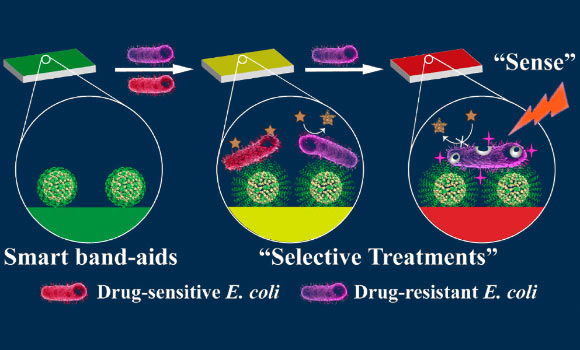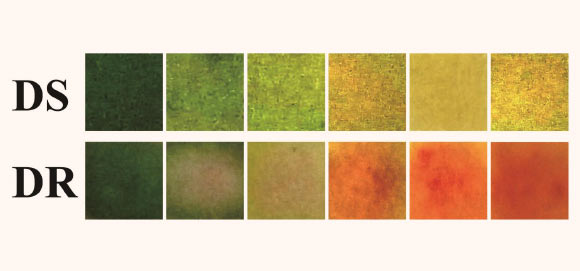A team of scientists has developed visualizing paper-based bandages that can sense drug-resistant and drug-sensitive bacteria in wounds and implement a selective antibacterial strategy; the colors of bandages indicate bacterial infection (yellow) and drug resistance (red), just like a bacterial resistance colorimetric card.

A drug-resistant visualizing paper-based band-aid for point-of-care sensing and selectively treating drug-resistant bacteria. Image credit: Sun et al, doi: 10.1021/acscentsci.9b01104.
“Sensing bacterial infections and monitoring drug resistance are very important for the selection of treatment options,” said Dr. Xiaogang Qu from the Changchun Institute of Applied Chemistry at the Chinese Academy of Sciences and colleagues.
“However, the common methods of sensing resistance are limited by time-consuming, the requirement for professional personnel, and expensive instruments.”
“Moreover, the abuse of antibiotics causes the accelerated process of bacterial resistance.”
“Inspired by World Health Organization’s need for portable and inexpensive devices to combat antimicrobial resistance, paper-based devices are promising platforms for antibacterial therapy.”
Dr. Qu and co-authors developed a material that changes color from green to yellow when it contacts the acidic microenvironment of a bacterial infection.
In response, the material, which is incorporated into a bandage, releases an antibiotic that kills drug-sensitive bacteria.
If drug-resistant bacteria are present, the bandage turns red in color through the action of an enzyme produced by the resistant microbes.
When this happens, the researchers can shine light on the bandage, causing the material to release reactive oxygen species that kill or weaken the bacteria, making them more susceptible to the antibiotic.
They showed that the bandage could speed the healing of wounds in mice that were infected with drug-sensitive or drug-resistant bacteria.

A bandage changed color from green to yellow, and from green to red, in the presence of increasing concentrations of drug-sensitive (DS) and drug-resistant (DR) Escherichia coli, respectively. Image credit: Sun et al, doi: 10.1021/acscentsci.9b01104.
“Compared with traditional photodynamic therapy-based antibacterial strategies, our design can alleviate off-target side effects, maximize therapeutic efficacy, and track the drug resistance in real time with the naked eye,” they said.
“This work develops a new way for the rational use of antibiotics. Given the low cost and easy operation of this point-of-care device, it can be developed for practical applications.”
The study was published in the journal ACS Central Science.
_____
Yuhuan Sun et al. Colorimetric Band-aids for Point-of-Care Sensing and Treating Bacterial Infection. ACS Cent. Sci, published online January 29, 2020; doi: 10.1021/acscentsci.9b01104







